Benin Obas (1200CE -Present) written By Osahon Naiwu |
|
|
|
Oronmiyan´s intervention in Igodomigodo was around 1170 CE. Ogieamie Irebor prevented Prince Oronmiyan from entering the heart of Igodomigodo kingdom. The Edion´isen built a palace for Prince Oronmiyan at Usama. The Yoruba prince refused to fight Ogieamie. Unable to bear the animosity for too long, Oronmiyan renounced his office and called Igodomigodo, Ile Ibinu, (meaning a land of annoyance and vexation). He declared that only a child of the soil, educated in the culture and traditions of Igodomigodo could rule the kingdom.
Prince Oronmiyan, on his way home to Ife, stopped briefly at Egor, where he pregnated Princess Erimwinde, the daughter of the Enogie of Egor. Enogieship was created by the Ogiso dynasty. Egor was a dukedom and the Enogies of dukedoms were usually relatives and siblings of Igodomigodo monarchs. Many members of the guild of royal drummers whose ancestral home was at Ikpema quarters in Benin City, where allowed to settle in Ovia territory of Egor by the Enogie on the instructions of the Igodomigodo monarch at the time. Therefore, Oronmiyan´s choice of the Enogie of Egor´s daughter, on his way out of Igodomigodo, could not have been a casual decision    Full Story >>> Full Story >>>
|
|
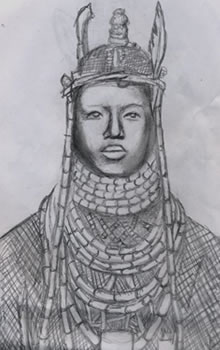 |
Oba Eweka I (1200-1255 CE), ruled over Usama, renamed Ile-Ibinu, outside Igodomigodo. By the time of Oba Eweka's reign in Ile-Ibinu, Ogieamie Irebor who ruled Igodomigodo had been succeeded by Ogieamie Ubi. Oba Eweka's reign was not particularly eventful. He was succeeded by his two sons, Oba Ewakhuahen and Oba Ehenmihen in quick succession. Neither of them made any impact on Ile-Ibinu as well.
|
|
Oba Uwakhuanhen (1235 -1243 CE),reign made no impact on Ubini .
|
4th
Oba Ehenmihen (1243 -1255CE), reign made no impact on Ubini .
|
 |
5th
Oba Ewedo (1255-1280 CE), succeeded Oba Ehenmihe. He changed the name Ile-Ibinu to Ubini and moved his palace from Usama to its original Ogiso site in the heart of Igodomigodo. The relocation of the palace site from Usama to the urban heart of the kingdom caused a bitter war between Oba Ewedo of Ubini and the Ogieamie Ode who was the ruler of Igodomigodo at the time. The fight was considered purely a family matter by the people of Igodomigodo and the Edion' isen. To prevent it leading to the loss of too many innocent lives, the Edion' isen prevailed on the adversaries to settle their quarrel amicably. Oba Ewedo requested Ogieamie Ode to sell Igodomigodo land to him. A treaty was struck requiring Ogieamie, as the traditional landlord of Igodomigodo kingdom, to sell Igodomigodo land to the Oba at the coronation of every successive Oba. The Oba elect first had to present gifts to the Ogieamie, which include two male and two female servants, a royal stool, a wooden staff, a rectangular stool and a round leather box.
The Oba-in-waiting and the Ogieamie would then meet at their common boundary called ´Ekiokpagha, where the Ogieamie would take sand from the ground and put it in the hand of the Oba and say: “I have sold this part of Benin land to you but not to your son and when you pass away .   Full Story >>> Full Story >>>
|
|
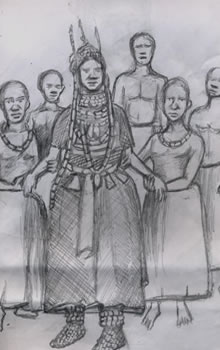 |
Oba Oguola (1280-1295 CE), succeeded Oba Ewedo as the fifth Oba of Ubini. He dug the protective moat around Ubini during his reign. The city of Benin, like ancient Egyptian cities walled against predators, has a giant protective moat dug around it without using mechanical equipment. The engineering feet still marvels in modern times. The Benin moat is described in the Guinness Book of Records as second in magnitude only to the Great China wall. Another Edo marvel is that giant foot-prints on stones have been found in Uhen, Ovia North East Local Government Area. Oba Oguola was succeeded in turn by his three sons.
|
|
Oba Edoni (1295 -1299 CE), Oba Oguola was succeeded by Edoni whose reign made no impact on Ubini .
|
Oba Udagbedo (1299-1334), reign made no impact on Ubini .
|
9th
Oba Ohen (1334-1370 CE), whose murder of his Iyase, the traditional prime minister of Ubini land, led to a rebellion that brought his reign to an end with his stoning to death.
|
10th
Oba Ogbeka (1370-
1400 CE), reign made no impact on Ubini .
|
11th
Oba Orobiru (1400 -1430 CE), reign made no impact on Ubini .
|
 |
12th
Uwaifiokun (1430AD-1440 CE, he usurped the throne of Benin kingdom in place of his senior brother prince Ogun who was the heir apparent.
|
|
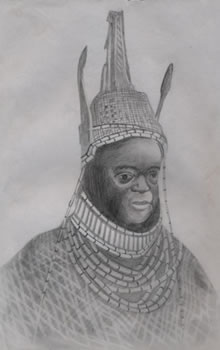 |
Oba Ewuare the Great (1440-1473 CE), was himself forced into exile and nearly would not have ascended to the throne. When Oba Orobiru died, members of the Edion'isen where uncomfortable with Oba Ohen's third son´s strong and independent streak and did not want him (Prince Ogun), to become the Oba. When the hostilities building against him over his right to the throne was getting unbearable, with death penalty hanging on his head, he fled into the woods to save his life, taking his junior brother, Uwaifiokun, along with him. He did not know at the time that the Edion'isen favoured Uwaifiokun over him to rule.After three years of living wild and aimlessly, with the toll beginning to tell on him, he decided to send Uwaifiokun to the city to discreetly find out what the feelings were about the Ubini throne that had been vacant since he and his brother escaped into the forest. When Uwaifiokun arrived at Chief Ihama of Ihogbe´s home, the chief excitedly rushed him to meet with the Edion´isen who enthusiastically received him. Asked about his elder brother, Prince Ogun, Uwaifiokun lied that he had not seen him for a long while. The king makers then offered him the throne which he quickly accepted, thus   Full Story >>> Full Story >>> |
|
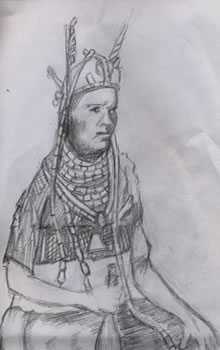 |
Oba Ezoti (1473 CE), succeeded his father to the throne in 1473 and reigned for only 14 days when he died from injuries inflicted on him in attempted regicide on coronation day.
|
|
 |
Oba Olua (1473-1481CE), ascended the throne after the assassination of his brother, Oba Ezoti, who had a son, Prince Owere, claiming legitimacy to the throne at the time. Prince Okpame quietly murdered his nephew, Prince Owere, in defence of Oba Ewuare's injunction that first generation princes had first claim to the throne. Okpame escaped into northern Edo territories as a fugitive on the run, to avoid punishment when the murder was discovered. There in the wilds, he acquired a knight's amour of Byzantine origin from North Africa, thus making himself look fearsome and unassailable. His bizarre adventure led him to some battles in the jungle. He fathered the Ora people of today.
The death of Prince Owere, coupled with the continuing war like antics of Prince Okpame, obviously influenced Oba Olua to keep his son, Prince Iginua, out of possible harms way. Oba Olua arranged for his son, Prince Iginua, to travel south to the riverine area, bedecked in the appurtenance of kingly power and authority, with a large retinue of officers and servants at his beck and call. Iginua became the Olu of the Itsekiris.
|
|
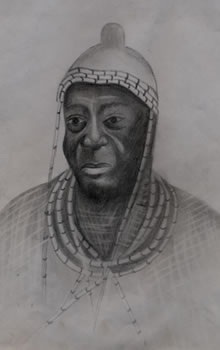 |
16th
Oba Ozolua (1481-1504 CE). After the death of Oba Olua, Okpame was invited to ascend the throne and he took the title of Oba Ozolua. Two of Ozolua´s sons were kidnapped (oduomomu, meaning thieves of children) during that period of the slave trade. Oba Ozolua reintroduced the process of first son succeeding to the throne, with Dukedoms carved out for the other princes. The older of his two remaining sons, after he had lost two sons to the slave trade, was Osawe, who was named the Edaiken (Oba-in-waiting). Idubor, the junior to Osawe, was appointed the Duke of Udo, the home town of Oba Ozolua's mother, and the second largest and most important town in the kingdom at the time. Idubor, known as Arhuanran n'Udo (the giant of Udo), was not happy about playing second fiddle to his senior brother, Prince Osawe.
Ozolua, as predicted by the king makers before he became king, was aggressive and war-like. In a feud between him and a powerful mystic called Elekighidi of Ogbelaka quarters, he enticed Elekighidi's wife, Eyowo, to betray her husband and then married her after his triumph over Elekighidi. Then Oba Ozolua beheaded Eyowo out of fear that she could betray him too in future. Oba Ozolua was dreaded abroad. He fought over 200 successful battles   Full Story >>> Full Story >>>
|
|
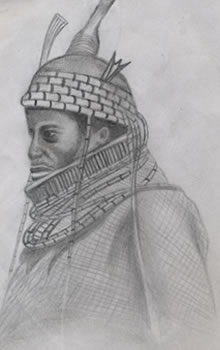 |
Oba Esigie (1504-1550 CE). Oba Ozolua's first son, Prince Osawe succeeded him to the throne and took the title of Oba Esigie. The feud between Oba Esigie and his brother, the Duke of Udo had been building up from the day of their birth. They were products of two of the wives of Oba Ozolua. Idia, the subject of the famous FESTAC mask, was the mother of Osawe, while Ohonmin was Idubors's mother. Ohonmin gave birth to Idubor, a few hours before Osawe arrived, but because Idubor did not immediately cry at birth, Osawe who did, was reported first to the king, according to tradition. By the time Idubor cried, to enable the mother report his birth, the king had performed the proclamation rites of Osawe as first son.
Idubor, while growing up was very bitter about his treatment. He more than on one occasion asked his mother if his father was his true father to be so callous as to take away his birthright in such a mean fashion. As the Duke (Enogie) of Udo, Idubor refused to accept subordinate role to his brother, Oba Esigie, and at first tried to make Udo the capital of Benin kingdom with himself as king. It didn´t take too long before the two brothers went to war. The war was difficult, bitter, and long drawn out. It was not until the third campaign that Udo was defeated. The third campaign was timed to coincide with the planting season when Udo citizen-soldiers, who were mainly farmers, would   Full Story >>> Full Story >>> |
|
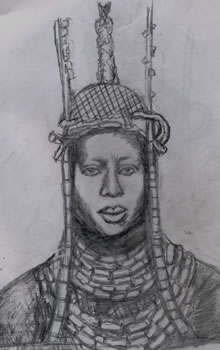 |
Oba Orhogbua (1550-1578 CE). When his father, Oba Esigie died, Orhogbua was in Europe. On arrival from Europe, the Bini insisted that he choose between being a Catholic priest and an Oba because he can not be both. The popular saying in Benin at the time was: ?Ai wo Oba, wo ebo,? meaning you cannot be king and be priest to a deity. Orhogbua chose to become Oba.
The Bini had always considered their riverine territories the Iyekowa (backyard) of Benin land and for hundreds of years they controlled the entire area. It was the route through Ughoton water side that the land locked kingdom reached out or was reached from abroad, and increasingly so from Oba Ewuare´s era. The Bini called the route: ?ode ame (the riverine route, and would sometimes add: ?emwin n'omo yaru omo ode ame erokerhe,? (meaning: the underpinnings of the authority and prestige of the Oba of Benin, came through the riverine route).
It was the revenue route from the outside world to Benin. Active trading with the Portuguese started in 1553, with the Edo offering ivory, palm oil, pepper, cloth, beads directly and slaves brought into her Ughoton port from surrounding territories under Edo Empire. The first guns came into Benin through this route, as did iron bars from Holland for the five blacksmith guilds, and the manila currency melted into raw materials for the exquisite Benin bronze masterpieces in all the leading museums of the world today. The cowry   Full Story >>> Full Story >>>
|
|
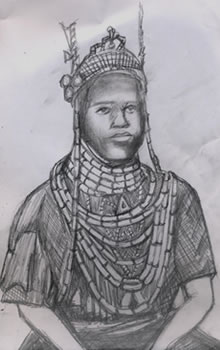 |
19th
Oba Ehengbuda (1578 ? 1604 CE). Ehengbuda ascended his father's throne in 1578 CE. While his father, Oba Orhogbua, might be considered a water warrior who made his greatest impact in the lagoon territories, Oba Ehengbuda campaigned mainly on land in the Yoruba areas.
All the warrior Obas, most times, personally led their troops to war. Oba Ehengbuda, while prosecuting his military activities in the Akure area, sustained burns which healed to leave scars on his body. This was systematized in the Iwu body marks which every Edo adult had to acquire to be able to participate in royal and court activities of the land. The markings also served to identify the Edo person for protection during the slave trade. Strong efforts were made to prevent Edo people from being sold into slavery. Edo people openly and actively encouraged and facilitated the escape of slaves from the holding centres in the kingdom and particularly from the Ughoton port.
As a result of Oba Ehengbuda's accident, the responsibility for leading the army in war was delegated to the Iyase. Chief Ekpenede, who was the Iyase at the time, became the number one commandant of the Edo army. He prosecuted several successful campaigns in Yoruba terr including ....   Full Story >>> Full Story >>>
|
|
20th
Oba Ohuan (1604 1641 CE) was Oba Ehengbuda's son. He ended the Eweka dynastic lineage. Powerful rebel chiefs established private power bases and selected Obas from among themselves. The selection process took the format of the Ihogbe picking an Oba from among their ranks and presenting him to the Uzama for crowning. This process produced a series of Obas, seven of them, with doubtful claims to legitimacy, thus seriously weakening the Edo monarchy. By the mid 17th century and extending well over the period of confusion about who reigns in Benin, the Portuguese, Dutch, English, French and other Europeans, had expanded the slave trade in the area so much that they were calling it the Slave Coast. The slave trade remained high in the area until 1840. The slaves were mainly war captives and were drawn from the entire area controlled by Benin all the way to the communities near the coast and to northern peoples such as the Bariba. The Atlantic slave trade had a destructive impact in Benin area, causing devastating depopulation around Benin and greatly militarizing the area.
|
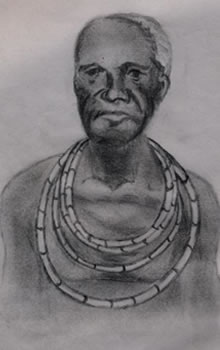 |
21st
Oba Ohenzae (1641 -1661 CE), was the first of the seven Obas with doubtful legitimacy. His Ezomo was called Ezomo N´Ogun. Ezomo N´Ogun was the first person in the history of Benin to propitiate his own head, (that is to give thanks to the spirit of good fortune), with a live elephant. The incidence helps to demonstrate the demoralizing effect the slave trade had on African communities through deaths, kidnappings, sacking and disappearance of towns and villages, and the truncation of African progress and civilization. Only two other Edo personages have achieved Ezomo N´ Ogun´s feat of using live elephant in rites. Iyase Ohenmwen achieved it some 170 years ago and Oba Akenzua II pulled it off in February 1936. Servants sent by Ezomo N´Ogun to capture a live elephant, took 14 days to come home with one. While the richly garlanded elephant, restrained with strong ropes to the legs, arms and body, was being led in procession through the streets to the ritual site, an elderly man, watching from the safety of the verandah of his home remarked rather loudly:
What is the cause of the rejoicing of these people over the fragment called life?   Full Story >>> Full Story >>>
|
|
22nd
Oba Akenzae (About 1661-1669 CE), there were no events of importance during his reign .
|
23rd
Oba Akengboi (1669-1675 CE), there were no events of importance during his reign.
|
24th
Oba Akenkpaye (1675AD-1684 CE) ,there were no events of importance during his reign.
|
25th
Oba Akengbodo (1684-1689 CE), there were no events of importance during his reign.
|
 |
Oba Ore-Oghene (1689 ? 1700 CE), who received a personal letter from Pope Innocent XII in 1692, encouraging him to remain a catholic.
|
|
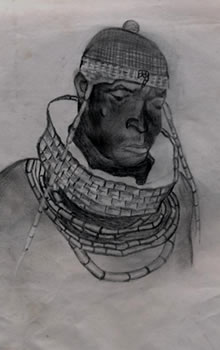 |
27th
Oba Ewuakpe (1700 ? 1712 CE), was thrust into office by his father, Akenuzama, who had declined the offer to be king on the grounds of old age. The offer had been made to Akenuzam by the Ihogbe, after the death of his cousin, Oba Ore-Oghene, who had no heir. Oba Ewuakpe, whose birth name was Idova, but was hurriedly re-named Ehennegha by oracular directive before the Ihogbe presented him to the Uzama nobles for crowning, was too young, inexperienced and impatient. These led to a series of problems for him. His first problem was that he could not offer propitiatory rites at the Oba's ancestral shrine as required by tradition because his father was still alive and not an ancestor yet. Then his mother, Ewebonoya, died at her Uselu palace, soon into his reign.
To provide her with the level of comfort she had become accustomed to as Queen mother, he sacrificed humans, a great number of them, to continue to attend to her needs in the ethereal world. Edo people, appalled by the human sacrifice and blood letting, rebelled and laid siege on the palace, flinging its gates open. The palace staff and his hundreds of wives took flight excepting Iden, one of his wives, who refused to return to her parent's home at Oka village. When the siege became too unbearable, the Oba escaped with Iden to his mother´s village, Ugolo quarters at Ikoka, by the side of Ovia River .  Full Story >>> Full Story >>>
|
|
|
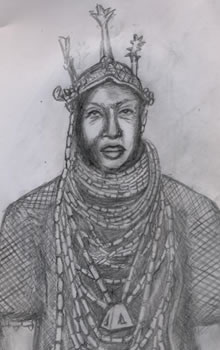 |
Oba Ozuere (1712 ? 1713 CE), was only able to serve for about a year because Iyase´ N´Ode´s candidate, Prince Akenzua, became Oba
|
|
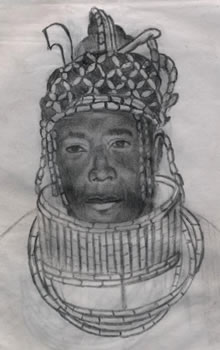 |
29th
Oba Akenzua I (1713 - 1735 CE). Ehenua played a crucial role along side Iyase N'Ode in the fight to install Prince Akenzua as king. Oba Akenzua I, rewarded Ehenua with the title of Ezomo and made the title hereditary for the first time. He also for the first time promoted Ezomo to the rank of Uzama, the seven kingmakers of the kingdom, whose most junior member is the Edaiken. Other members of the Uzama are the Iyase, Oliha, Ero, Eholor N'ire and Edohen. Ezomo was the last title to join the group of nobles; most of the others had been members since the Ogiso era.
|
|
|
Oba Eresoyen (1735 ? 1750 CE), had only just ascended to his father's throne when trouble came calling. Commandant Willem Hogg, the resident Manager of the Dutch Trading Station in Ughoton, had for nearly a year been pleading with Eresoyen's father, Oba Akenzua I, to prevail on the Benin Chiefs owing the Ughoton Dutch Trading Station, unsupplied goods on which they had received credit lines. Also, Holland wanted to be allowed to participate in the Ivory trade and break the monopoly the monarch had granted the British and Portuguese ships calling at Ughoton. Traders of the two countries were offering better prices for the commodity. The palace had seemed to Willem Hogg, unwilling to help the Dutch company recapture slaves who had escaped from the Dutch company's dungeons at Ughoton while awaiting their evacuation ship from Elmina Castle on the Gold Coast, to arrive. Half-hearted promises had been extracted from the palace over the issue of the runaway slaves, against the overriding feeling at the palace that it was the responsibility of the Dutch to secure their purchases after taking delivery.
These were the problems weighing on Willem Hogg's mind when he decided to visit the palace to once more seek the help of Oba Oresoyen. In the presence of the Oba and chiefs, while discussing the issues that brought him to the palace, argument developed, leading to the loss of temper. The   Full Story >>> Full Story >>>
|
|
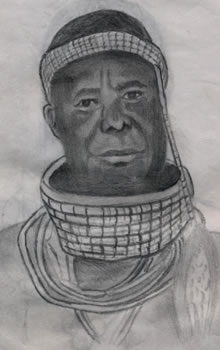 |
31st
Oba Akengbuda (1750 ? 1804 CE), inherited his father's throne and reigned for 55 years. His son, Prince Osifo, sent white hair from his head to his father to show he was getting old. The father sent back salt and native chalk, meaning life is sweat. Adesuwa, already betrothed to him by his Ezomo, was murdered by the Obi of Obuluku for refusing to be his (Obi's) wife. This led to the Obi's head being brought to Akengbuda.
|
|
32nd
Oba Obanosa (1804 ? 1816 CE), was Prince Osifo, Oba Akengbuda's son. There was a great commotion known as the Okpughe´ during his reign as Oba. As a handsome dandy, before he was crowned king, he felt he had a rival whose name was Osopakharha. The prince hated Osopakharha for his popularity, guts, flamboyance, and for what the prince described as his pretensions. The problem really was that they were look-alike young men, competing for influence and space in public esteem. Osopakharha was the son of the Esogban of Benin. The family lived at Ugbague quarters and there was nothing special about that. Osopakharha was the warlock of a witches coven known as Eniwanren-Aso (the Elders of the night). The prince's parents were the patron and matron respectively of the coven. Even after Oba Akengbuda's death, the prince´s mother, Iyoba Ose, remained the matron of the coven. Osopakharha hated the prince for hating him, and for trying to clip his wings as if he was his slave or underling.    Full Story >>> Full Story >>>
|
|
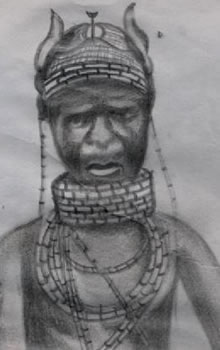 |
Oba Ogbebo (1816 CE). There was a strong tussle for the throne between the two sons of Oba Obanosa, Prince Ogbebor and Prince Osemwende, over who was the senior. Prince Ogbebor triumphed but ruled for less than a year.
|
|
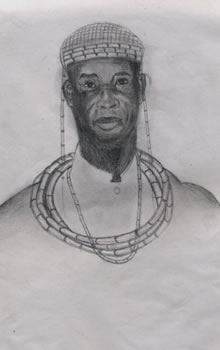 |
34th
Oba Osemwende (1816 ? 1848 CE), who took over the throne from his brother, died in 1848, leaving his two sons, Prince Ogbewekon and Prince Adolor, with the problem of who was the oldest to serve as Oba.
|
|
 |
35th
Oba Adolor (1848 ? 1888 CE), Prince Adolor won the battle and ruled until 1888. The leadership tussle surfaced again between the two sons of Oba Adolor, Prince Ovokhorhor and Prince Ovonramwen. This time, the battle was not as acrimonious as in previous times and was resolved in favour of Ovonramwen.
|
|
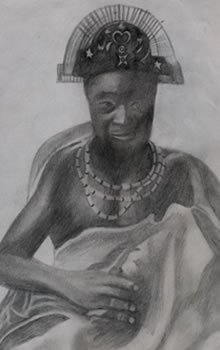 |
Oba Ovonramwen (1888 ? 1914 CE). Oba Ovonramwen Nogbaisi was on the throne during the British invasion of Benin City in 1897. To prepare the grounds before the invasion, the British first sneaked military spies into Benin, to infiltrate the nation´s security system during the Igue festival, a period of acute spiritual sensitivity for Edo people, when their monarch goes into seclusion for two weeks for spiritual cleansing and cannot receive visitors. The spies were eliminated for their hostile acts. The British then sent a delegation to Benin in March 1892. The delegation was led by Capt. Henry L. Gallwey, the Vice Consul for the Benin River District of the Niger Coast Protectorate, supposedly to conclude a Treaty of Protection with Oba Ovonramwen of Benin. The British had deceived King Dosumu of Lagos to sign a similar treaty that ceded Lagos to the British in 1861. They forced the same kind of treaty on the Jaja of Opopo in 1887 to gain access and economic control of the eastern coast of Nigeria. Quoting Capt. Henry Gallwey, who after retirement became Sir Henry Gallwey, in a report on the 1892 visit to Benin, for the Journal of the African Society of April 1930, under the title: Nigeria in the (Eighteen) Nineties, he wrote in part: ?Any idea I may have had of being received by the king the day I arrived was very soon dispelled. After being kept waiting for three days, I sent word to say that I could wait no longer. To support my threat, every half-hour, I sent a carrier away with a load I did not require, telling them where to wait   Full Story >>> Full Story >>>
|
|
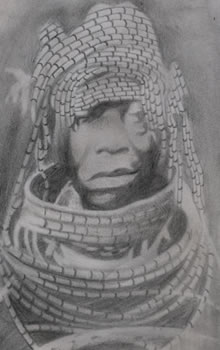 |
37th
Oba Eweka II (1914 ? 1933 CE), ascended his father´s throne in 1914 and when his father died . |
|
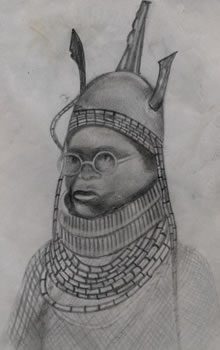 |
Oba Akenzua II (1933 ? 1979 CE), took over. Between them, they restored a great deal of the tradition and dignity of Benin Obaship, and rebuilt, although on a smaller scale than the Ewuare palace, the grandeur, triumph, and supremacy, of Bini traditions. Large walled areas have now replaced the numerous compounds of former kings, with enclosed individual altars for each of the three immediate predecessors, and one general altar for the rest. Decorated sheets of brass adorn the rafters and lintels, and terra-cotta plaques recount the exploits of former kings.
|
|
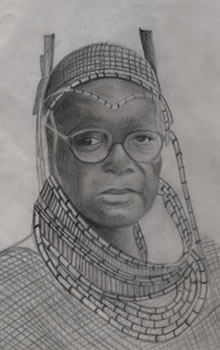 |
The current king of this great African kingdom and one of the most vibrant, colourful, and enlightened ancient civilizations in the history of the world, is Oba Erediauwa, Uku Akpolo Kpolo, the Omo N'Oba N'Edo (1979 CE ?).
|
|
|
Oba Ewuare II
{2016AD-Date}
Born in 1953, as Crown Prince Eheneden Erediauwa, is a former Nigerian Ambassador to the Kingdoms of Sweden, Norway and Denmark; the Republics of Finland and Angola. He also served in Rome, Italy and Albania.
The Omo N' Oba N' Edo attended the Benin Divisional Council Primary School, Benin City. Edo College, Benin City, from 1965 to 1967, and Immaculate Conception Collage (I.C.C), Benin City, from 1968 to 1970, where he obtained his Secondary School Leaving Certificate.
After obtaining his Secondary School Leaving Certificate in 1970, Oba Ewuare IIl proceeded to England, and studied from 1971 to 1972, at South Thames College, South West London, for the General Certificate for Education (G.C.E. Advance Level).
As a result of the Crown Prince’s love for education, he quickly applied for tertiary education and secured admission to study at the University of Wales, Cardiff, Wales, United Kingdom, in 1973, and graduated with a Bachelors of Science degree in Economics (B.Sc. Econ.) in June, 1977.    Full Story >>> Full Story >>>
|
|
|
|
|
|